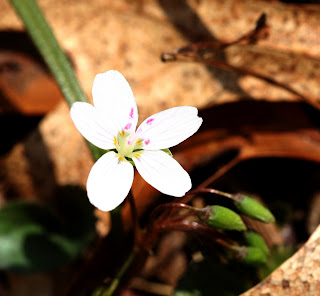
About 10:00 a.m., I walked down the driveway to get the newspaper and take a couple of photos of the snow which had covered the ground and trees.
As I walked down, I heard more than the usual number of crows. Maybe they were crowing about VCU's big win over Kansas in the NCAA tournament yesterday. It's not Virginia Tech but it's Virginia anyway!

The snow covered the redcedar trees across the road, giving cover to lots of wildlife including turkeys, coyotes, and northern cardinals.

This closeup shows the male flowers of the Redcedar tree. So, I was wondering if my bees were bringing in some of this pollen a few days ago. I counted at least 5 different colors--beige, yellow, orange, gold, and red.

Spicebush with snow March 28, 2011
Even the blooming spicebush shrubs were covered in the wet snow.

Spicebush in bloom March 23, 2011
This was how they looked 5 days ago.

Spicebush with Hawthorne in bloom March 23, 2011
The hawthorne shrubs had already leafed out but won't bloom until next month.

Bloodroot March 23, 2011
The bloodroot had bloomed too already.
By the time I got back up the driveway, the snow had already melted! And when I turned on the television, I learned we had a 2.5 earthquake at 4:00 a.m. only a few miles from where I live. That's spring for you!







